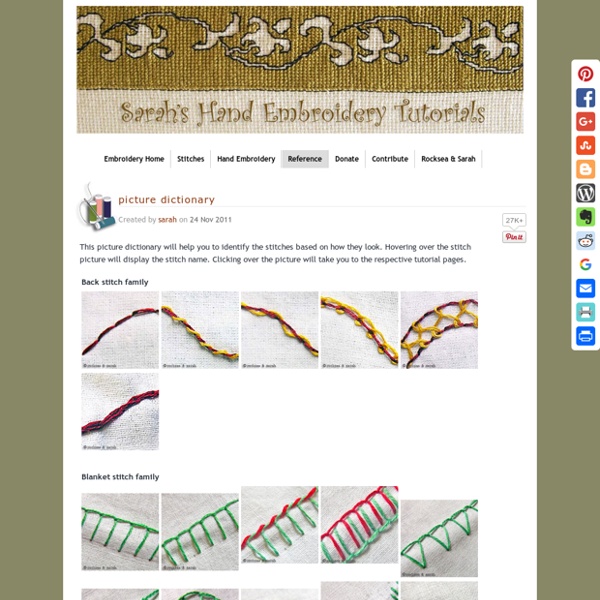Stitch and embroidery picture dictionary
This picture dictionary will help you to identify the stitches based on how they look. Hovering over the stitch picture will display the stitch name. Clicking over the picture will take you to the respective tutorial pages. Tags: back stitch, chain stitch, cretan stitch, cross stitch, embroidery tutorials, feather stitch, fishbone stitch, fly stitch, hand embroidery, herringbone stitch, knots, palestrina stitch, picture dictionary, running stitch, satin stitch, stem stitch, stitch dictionary, stitch family, stitch variations, weaving stitch 213 Comments »
Digitized the eye with maximum stitches
Heart with maximum stitches
Related:
Related:



